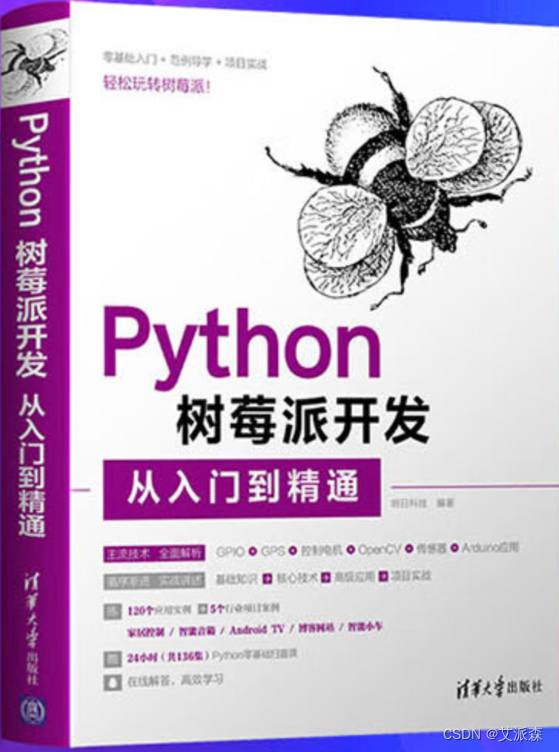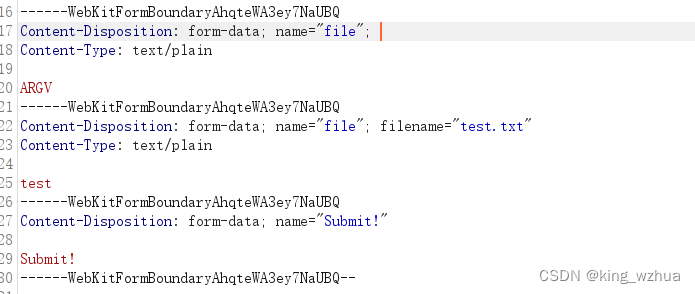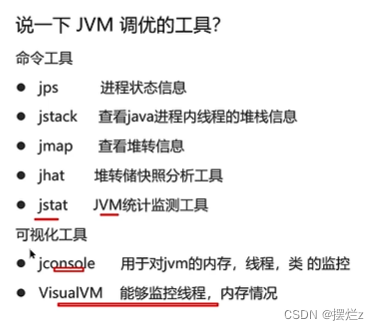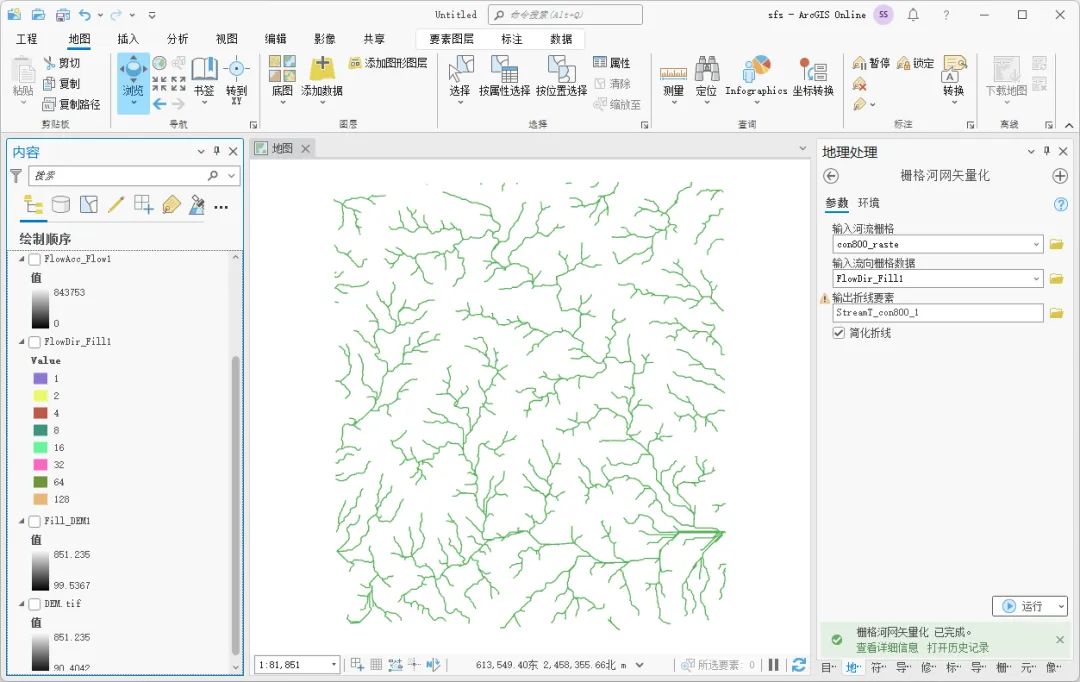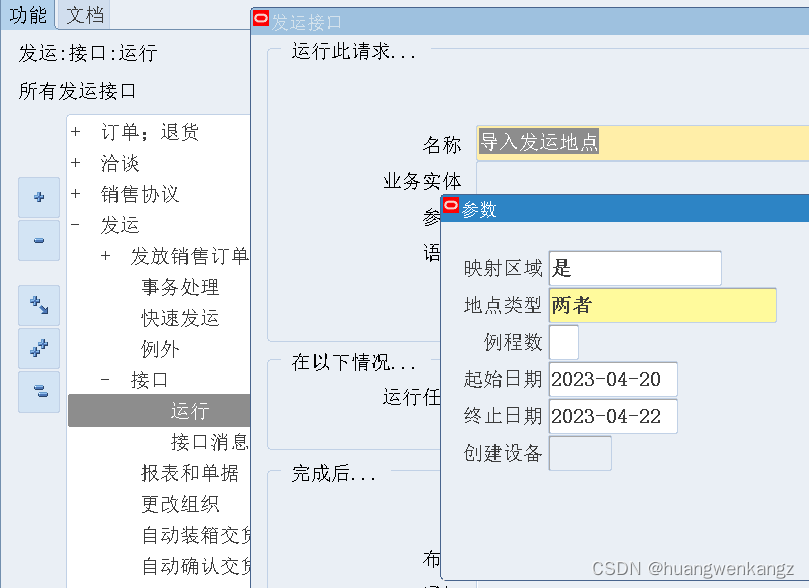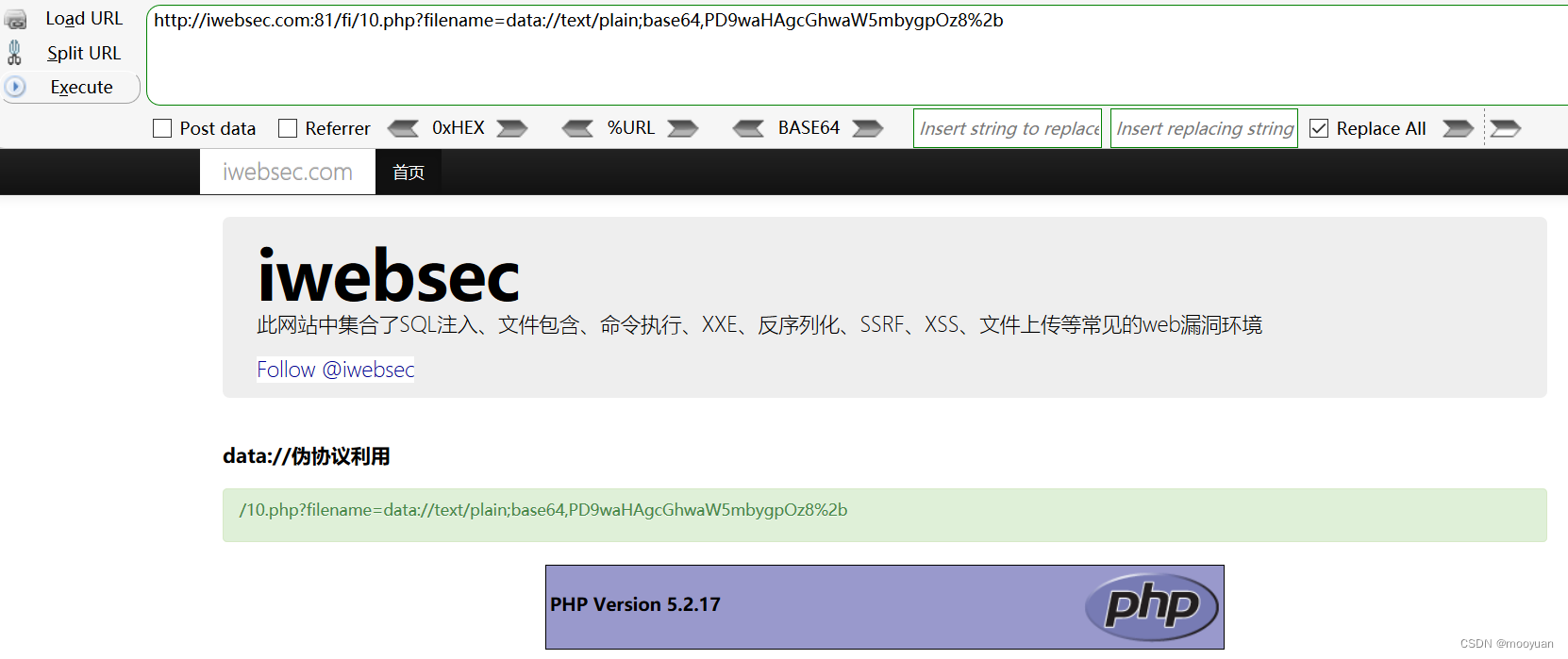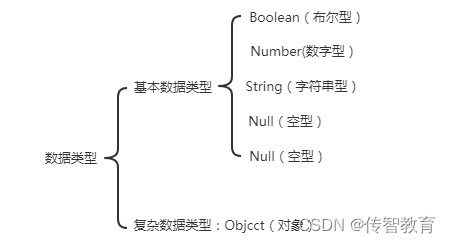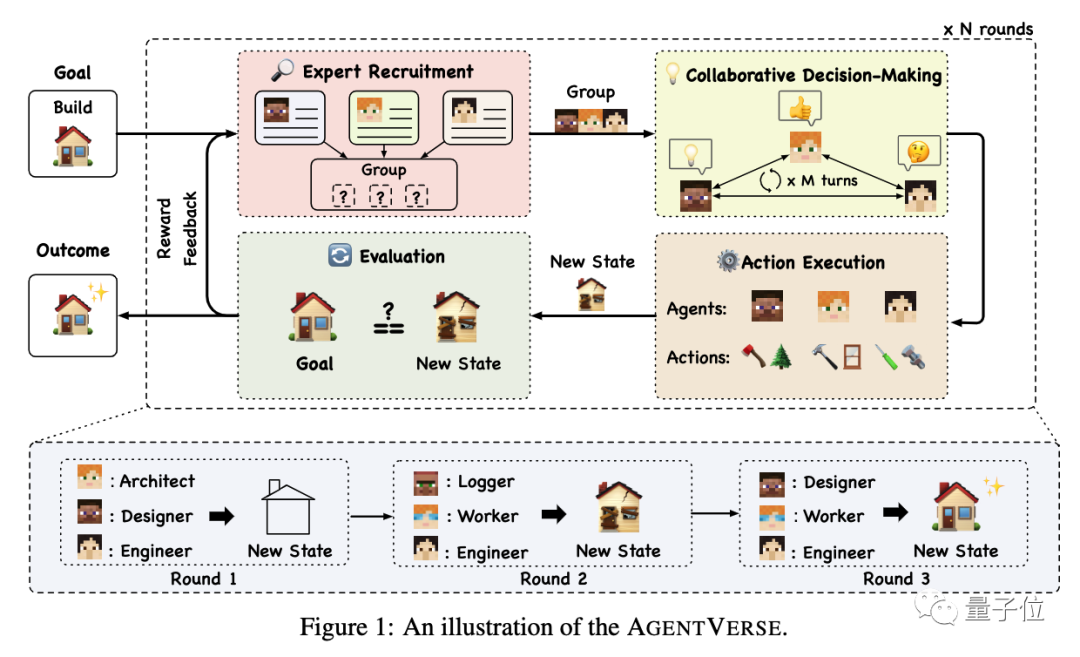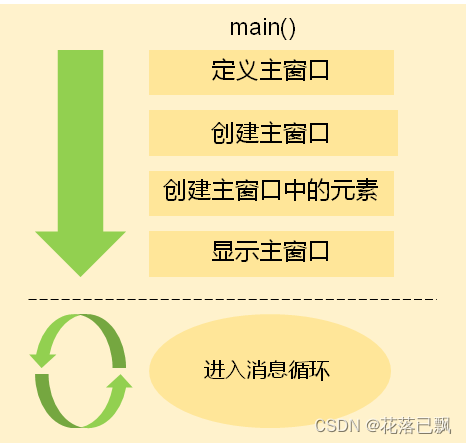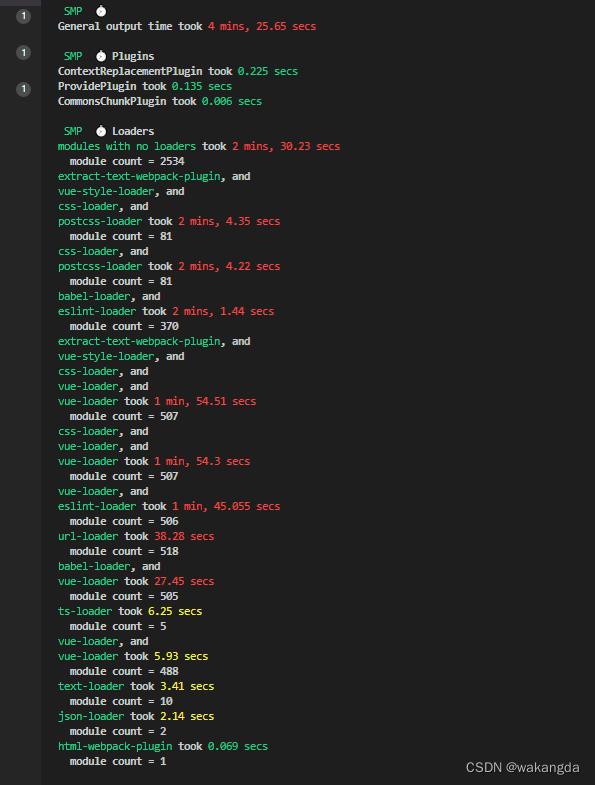目录
栈和队列的基本概念:
数据结构中的栈和队列:
栈和队列的基本结构:
1.栈和队列的结构示意图
2.栈和队列中数据的插入和删除
栈和队列的实现:
栈的实现
栈.c
stack.h
源stack.c
队列的实现
队列.c
queue.h
queue.c
栈和队列的基本概念:
在数组中,我们可以通过索引(下标)访问随机元素。在某些特定情况下,我们需要限制处理顺序,于是,产生了栈和队列这两种功能受限的线性结构。
栈和队列,两种不同的处理顺序,先进后出和先进先出,是两个相应的线性数据结构。
数据结构中的栈和队列:
统一用数组实现功能的话
1. 栈(stack)
数据先进后出,后进先出:LIFO(last in first out)
栈只有一个开口,先进去的就到下面,后进来的就在上面(top);要是拿出去的话,肯定从开口端拿出去,所以说是后进先出,先进后出。
入栈:push
出栈:pop
获取栈顶元素:top
判断栈是否已经为满:is_full
判断栈是否已经为空:is _empty
2. 队列(queue)
数据入队规则:先进先出,后进后出:FIFO(first in first out)
队列有队首(front)和队尾(back),数据从队尾入队,从队首出队。
队头(front)指向队列的第一个数据,队尾(back)指向队列中的最后一个数据。
入队:push
出队:pop
队首:front
队尾:back
栈和队列的基本结构:
1. 栈和队列的结构示意图

2. 栈和队列中数据的插入和删除
栈
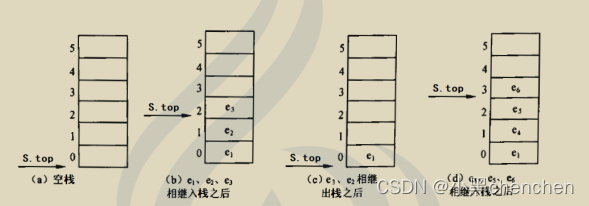
队列
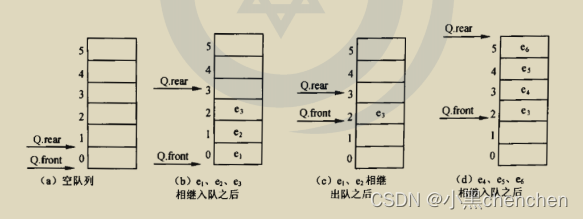
栈和实现:
stack.h
栈的头文件
:头文件用于数据类型的声明和功能函数的声明
#pragma once 防止头文件重复包含(vs)
#ifndef STACK 防止头文件重复包含
#define STACK
#define _CRT_SECUTE_NO_WARNINGS
#include<stdio.h>
#include<stdlib.h>
栈的数组实现
typedef int Type; 给数据类型取别名,方便一改全改
#define STACK_P "%d\t"
#define STACK_S "%d"
栈结构的声明
#define STACK_SIZE 10 栈的最大大小
typedef struct Stack{
Type data[STACK_SIZE]; 栈的数据域
int top; 栈顶元素下标
}stack;
栈功能的声明
数据入栈函数
void stack_push(Type data[], int *top, Type value);
数据出栈函数
Type stack_pop(Type data[], int *top);
获取栈顶元素
Type stack_top(Type data[], int top);
判断栈满函数
int stack_full(int top);
判断栈空函数
int stack_empty(int top);
#endif
源stack.c
#include"stack.h"
数据入栈函数
void stack_push(Type data[], int *top, Type value)
{
if (stack_full(*top))
{
printf("栈满了,数据入栈失败\n");
return;
}
data[++*top] = value; 向栈顶插入数据元素
}
数据出栈函数
Type stack_pop(Type data[], int *top)
{
if (stack_empty(*top))
{
printf("栈空了,数据出栈失败\n");
return -1;
}
return data[(*top)--]; 返回栈顶元素,栈顶标记-1
}
获取栈顶元素
Type stack_top(Type data[], int top)
{
if (stack_empty(top))
{
printf("栈空了,获取栈顶元素失败\n");
return-1;
}
return data[top];
}
判断栈满函数
int stack_full(int top)
{
//if (top >= STACK_SIZE - 1)return 1; 栈满了
//return 0; 栈没满
return top >= STACK_SIZE - 1;
}
判断栈空函数
int stack_empty(int top)
{
return -1 == top; -1表示栈中没有数据,栈为空
返回1.否则返回0
}
栈.c
#include<stdio.h>
#include"stack.h" 包含栈功能函数的头文件
多文件编程
栈功能的测试函数
void stack_test();
int main(){
stack_test();
return 0;
}
void stack_test()
{
stack s1; 定义了一个栈
s1.top = -1; 初始化栈顶元素下标top的值为-1(-1标识表中没有数据,栈为空)
s1.data[s1.top];操作栈顶元素
Type values = 0;
do{
scanf(STACK_S, &values);
stack_push(s1.data, &s1.top, values);
} while ('\n' != getchar());
printf(STACK_P, stack_top(s1.data, s1.top));
while (!stack_empty(s1.top))
{
printf(STACK_P, stack_pop(s1.data, &s1.top));
}
putchar('\n');
}队列的实现:
queue.h
#pragma once vs
#ifndef QUEUE
#define QUEUE
#define _CRT_SECURE_NO_WARNINGS
#include <stdio.h>
队列的实现
typedef int Type; 给数据类型取别名,方便一改全改
#define QUEUE_P "%d\t"
#define QUEUE_S "%d"
#define QUEUE_Pn "%d\n"
队列结构的声明
#define QUEUE_SIZE 10 队列的最大大小
typedef struct Queue{
Type data[QUEUE_SIZE]; 队列的数据域
int rear; 队尾元素下标
}queue;
队列功能的声明
数据入队函数
void queue_push(Type *data, int *rear, Type value); Type data[]也是一样的
数据出队函数
Type queue_pop(Type *data, int *rear);
判断队满函数
int queue_full(int rear);
判断队空函数
int queue_empty(int rear);
#endif源queue.c
#include "Queue.h"
队列功能的实现
数据入队函数
void queue_push(Type* data, int* rear, Type value)
{
if (queue_full((*rear) - 1))
{
printf("队列满了,数据入队失败!\n");
return;
}
data[(*rear)++] = value;
}
数据出队函数
Type queue_pop(Type* data, int* rear)
{
if (queue_empty((*rear) - 1))
{
printf("队列为空,数据出队失败!\n");
return -1;
}
Type value = data[0]; 记录队首元素
for (int i = 0; i < (*rear) ; i++)
{
data[i] = data[i + 1];
}
(*rear)--; 队尾元素下标-1
return value; 返回队首元素
}
判断队满函数
int queue_full(int rear)
{
return rear >= QUEUE_SIZE - 1;
}
判断队空函数
int queue_empty(int rear)
{
return -1 == rear;
}队列.c
#include<stdio.h>
#include "Queue.h" 包含队列的功能函数头文件
多文件编程
队列功能的测试函数
void queue_test();
int main(){
queue_test();
return 0;
}
void queue_test()
{
queue q1;
q1.rear = 0; 队尾下标初始化为0(0表示队列中没有数据)
Type values = 0;
do{
scanf(QUEUE_S, &values);
queue_push(q1.data, &(q1.rear), values);
} while ('\n' != getchar());
printf("队首为%d\t队尾为%d\n\n", q1.data[0], q1.data[q1.rear - 1]);
while (q1.rear >0)
{
printf(QUEUE_P, queue_pop(q1.data, &(q1.rear)));
}
putchar('\n');
}
______________#

